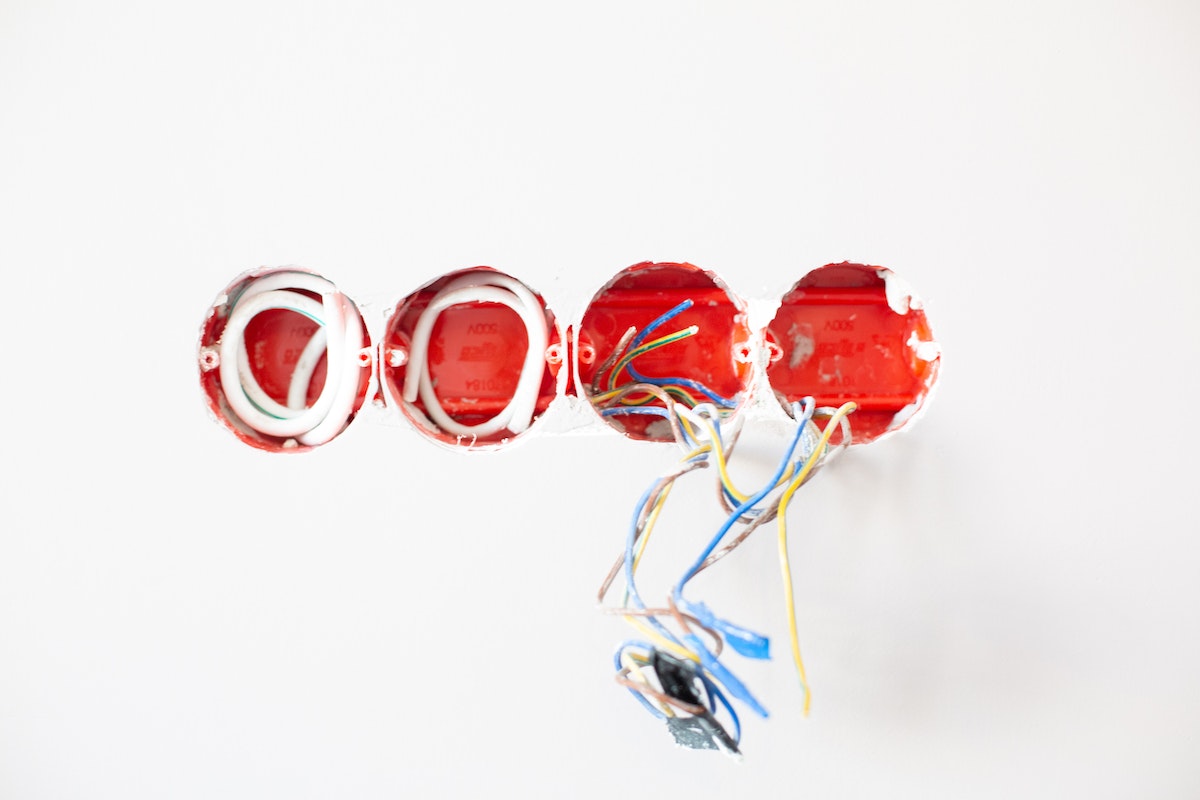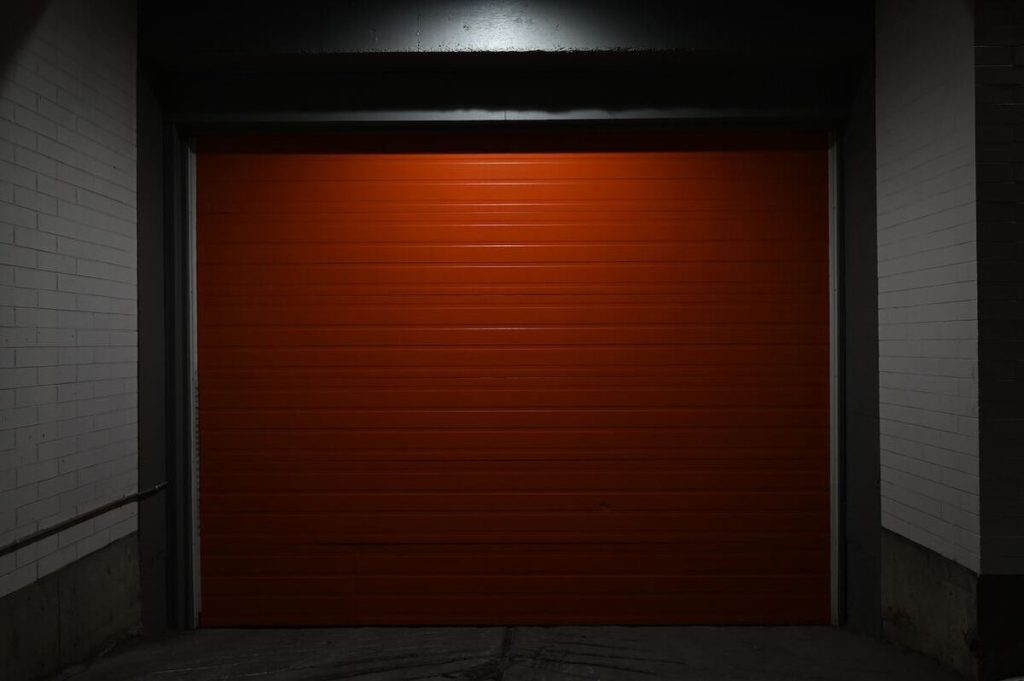- There are several different ways of bypassing garage door sensors, from the simplest as using a piece of tape to cover them to the most complex one as linking or disconnecting wires.
- Other approaches to bypass garage door sensors include disabling their connection to the power source or completely removing the sensors from the garage door. These approaches offer alternative ways to disable the sensor functionality.
- If you are handy, you can troubleshoot garage door sensor issues all by yourself by following safety steps.
- Whatever the reason for bypassing garage door sensors, it is always a good idea to get help from a professional technician and avoid the safety risks that may occur.
A garage door sensor is a great way to keep its contents safe and protected. Although it might sound unusual, sometimes there are situations when bypassing the sensors is needed. This may be the height of the car, which exceeds the sensor’s limits, or just to improve the garage door’s opening.
Whatever your reasons are, we’ll help you resolve these issues while maintaining safety in the first place. You may need several tools to do that, or at least a helping hand from a friend. Check out the solutions for different scenarios where you might need to bypass the garage door sensors.
- What Do You Mean by Bypass Garage Door Sensors?
- 15 Different Ways To Bypass Garage Door Sensors
- Troubleshooting Garage Door Sensor Issues
- Disconnecting Garage Door Sensors
- Bypass Garage Door Sensor Using 555 Timer
- 10 Safety Tips And Tricks To Follow During Garage Door Sensor Bypassing
- Conclusion
- FAQs: Bypass Garage Door Sensors
What Do You Mean by Bypass Garage Door Sensors?
Bypassing garage door sensors means disabling the functions or overriding the sensors intentionally installed as safety tools in your garage door. The sensors are commonly placed near the door’s lower part and can detect if there are any obstacles. In the event such an obstacle is detected, the sensors will signal to stop the door in order to prevent somebody from getting hurt.

There are several points why you may want to bypass garage door sensors:
- The height of the vehicle
- Malfunction
- Inconvenience
Those are the times when we consider bypassing garage door sensors while respecting the safety system above all. But it is of utmost importance to also be aware of the potential risks and outcomes which may arise, such as the following:
- Accidents and injuries
- Damages of objects and the garage
- Insurance and legal issues
- Security issues and unauthorized guests
It is strongly advised that you prioritize safety and security in any situation of bypassing garage door sensors and avoid it if it’s not necessary. You should contact the manufacturer or professional technical person who can help you with anything related to the issues by still having all the safety systems in place.
15 Different Ways To Bypass Garage Door Sensors
There are several different ways on how to bypass garage door sensors. Below you’ll find 15 different ways you can do this.
Sun Blockage
Direct sunlight hitting the sensors can cause a connection loss of the garage door sensors. To address this problem, try repositioning the sensors to a shaded area. By moving them away from direct sunlight, you may be able to resolve the issue and restore proper sensor functionality.

Wiring
Bad wirings are common and are sometimes caused by human error, weather conditions or animals and their chewing. Sometimes even insects can be the cause of malfunctioning garage door sensors. So, in order to bypass the garage sensors, you can simply wire the two sensors to each other or wire them faulty so they won’t work.
There is also a way to bypass the garage door if you just wire the sensors with the opener. This eliminates the requirement for the sensors to detect obstacles; thus, the sensor’s signals won’t interfere with the garage door opener, allowing it to function normally.
Disconnect the Sensor
You can easily disconnect the system from power by pressing the power off or reset button. A malfunctioning sensor can easily be bypassed by disconnecting it, which will reset the previous settings.
Remove the Sensors
To start, turn off the garage door’s power source to prevent any electrical risks. Follow the manual instructions and proceed to carefully unscrew or detach the mounting brackets holding the sensor in place. Secure any loose ends before disconnecting any wiring that connects the sensor to the garage door system.
To guarantee a secure removal, use caution at all times and think about seeing a professional if you have any questions regarding the procedure. Also, there might be several other garage elements to consider in terms of security.
Reflection
Garage door sensors typically use infrared light to detect anything in the door’s path.
The sensor alerts the opener when an object is found, telling it to stop or turn the door around.
You can control these sensors by reflecting the infrared light back into the sensor with a reflective surface, such as a mirror. This false reflection causes the door to open or close by tricking the sensor into thinking there is something in front of the door.
Laser Use
A laser pointer can also be used to temporarily block the sensor’s field of vision, rendering it inoperable for a short time and allowing you to pass undetected.
It’s important to remember that this strategy, as well as the previous one, is risky and unreliable, especially if used carelessly. Since improper use of the laser pointer might cause eye harm, caution must be exercised when attempting such hacks.
Piece of Tape
If previous tricks are not in the game, you can use blockage, such as a piece of tape, in order to bypass the garage door sensors. It would also reflect back the light into the sensor, and you can easily open your garage door.
Use the Press and Hold Button
One of the most effortless ways of bypassing garage door sensors is by just pressing the garage door button for a while. This will trigger and override the sensors, and the garage door can easily open. Keep in mind that this way will function only in case the sensors are working properly.
Adjust the Sensor Alignment
Sometimes the alignment is the one to blame for the sensor not working properly. If you are handy with tools, you can also take into consideration that you may adjust garage door sensors by yourself. You’ll find that aligning garage door sensors is not that difficult if you learn the tricks regarding the mechanisms.
Hack the System
Start by thoroughly removing the garage door sensor cables from both sides of the garage door and disconnecting them. The sensor wires should then be immediately rewired to the overhead motor housing, making sure they are facing one another. Use tape or another acceptable mounting method to hold them in place.
The alignment and connection of these sensors are essential for the effective operation of your garage door opener. The sensors are brought close to one another as part of this workaround, thereby retaining alignment.
It’s critical to remember that this strategy entails some dangers. For instance, the garage door might still try to close despite an obstacle, potentially endangering anything or anybody in its path.
Dirt Coverage of The Lenses
Dust, dirt, or other materials can obscure the sensors’ lenses, preventing the infrared beam from passing through, for which it is important to clean the sensors from time to time. The weather conditions may cause dirt to accumulate on the sensors, thus being difficult to operate, even disabling the garage door sensors.
Not Maintaining the Sensors
Your garage door system may experience a number of problems as a result of faulty or damaged sensors. These sensors are essential for detecting items or barriers in the door’s path and ensuring a secure and dependable operation.
The sensors may not accurately identify obstructions when they are malfunctioning, damaged, or old, resulting in the door not closing or reversing abruptly. The safety and operation of your garage may be jeopardized as a result. Identify and fix any problems with damaged sensors, and maintain them regularly to keep your garage door secure and functioning properly.
Stuck Garage Door
Take action if your garage door is stuck and won’t fully close. It is crucial to have a second person present for this task in order to assure safety. Obtain a strong object that can support the weight of the garage door, such as a ladder or a 2×4. Lift the garage door with the help of the other person, then set the item underneath to serve as a prop.
Before releasing the weight of the garage door, make sure the configuration is solid and steady. This preventative feature stops the door from suddenly slamming in the event that the garage spring breaks.
Make Sure There Are No Obstacles In The Way
Your garage door opener has safety measures to guard against harm or potential injuries. Therefore, the easiest and most efficient action you can take is to check that the path between the sensors is clear of any obstacles. Common offenders like trash cans, gas cans, or even spider webs can obstruct the sensors’ ability to work correctly. Simply remove any impediments if you see any, then try to close your garage door again.

Professional is Key
You may find out that even if you try all of the options above, sometimes calling a professional to do the work safely is the best option, especially when safety is at stake. There is no need to have knowledge in the electrical field to bypass the garage door sensors safely than just leave it to the professionals.
Troubleshooting Garage Door Sensor Issues
Malfunctioning garage door sensors are a common occurrence. Daily use of the garage door will eventually result in some issues that may require bypassing the sensors.
There are several reasons why your garage door sensors are not working properly, including the following:
- They are old – sometimes it’s just that the sensor is old and doesn’t work properly. Replacing it with a new sensor is the key solution.
- There’s dirt on them – regularly clean the sensors to avoid their malfunctioning.
- The wiring is not done properly – wiring issues are the most common issues when it comes to sensors not working. Being sure that everything is wired correctly can extend the life of your sensors and save you time and nerves with this issue.
- There are issues with the power supply – check whether the power installation is working properly and does not cause a lack of power supply which will also affect the proper work of the sensors. You may also want to check the garage heater here as well in order to eliminate safety consequences and make sure to use premium garage heaters.
- Misaligned sensors – in cases where garage door opener lights are not working, the problem often lies in the infrared light of the sensor. This is a case for a professional technician since it can also be a sign of misaligned sensors.
Those are the most common issues you’ll come across with garage door sensors. It is important to identify the issue in order to easily find the proper solution.
Disconnecting Garage Door Sensors
As previously mentioned, one of the methods to bypass the garage door sensors is simply to disconnect them entirely.
Step 1: Start by disconnecting the power to the garage door. Switch off the circuit that controls the garage door’s power or simply unplug the garage door sensor from the wall outlet. It is of utmost importance to ensure there is no electricity flow in the garage door while working with the door sensors. Disconnecting the sensors will render most automatic doors inoperable.
The sensors are located on each side of the garage door. Look for small plastic devices with LED lights near the floor on both sides of the garage door opening.
Step 2: Loosen the wings securing each sensor to its bracket, rotating the wing nuts counterclockwise using your hands. This will loosen the sensors allowing you to remove them.
Step 3: Next, proceed to cut the wires approximately 1 inch from the safety sensor using a pair of wire cutters to sever the white and black wires from the sensor. This will successfully disconnect the safety sensors from the garage door.
Step 4: Now, it’s time to rewire the new sensors’ cut wires. Strip the ends of the cut wires to expose the metal wiring within. Twist the black wire that was previously cut with the black wire extending from the new sensor. This should be repeated for the white wires as well. When everything is done, put the sensors back into their brackets and tighten the wing nuts again to hold them firmly in place.
It should be emphasized that safety is always a priority in any operation. The best way to stay safe is to call a professional technician and avoid injuries and consequences.
Bypass Garage Door Sensor Using 555 Timer
When your garage door sensors cannot work effectively because of insufficient light or immovable obstructions, you can trick them using a 555 timer. The timer turns the motor in clockwise and counterclockwise directions for a predetermined number of cycles, commonly 15.
- You can modify the number of motor circles based on the size of your garage door. Just take the sensors out of the opener and link them to the timer. Numerous 555 timer boards are available – some are cheap with the Vcc, and Output pins switched around. A suitable connection can be made by moving one connector over a slot, using a disk sander or Dremel tool to gently remove the extra connector housing.
- The circuit must include a diode to properly connect the output and Vcc lines. A necessary resistor on the Receiver board further enhances the functionality. Attempting to connect these wires without a diode could cause the 555 timers to overheat.
- Timing is a crucial component of this procedure, so using a scope to watch the processes is strongly advised. The output frequency range can be adjusted using the jumper on the timer board. Although the timing deviations of the garage door opener are somewhat tolerable, establishing closer synchronization promotes long-term success.
It is significant to remember that disabling garage door sensors may violate local laws and jeopardize the system’s safety features. When working with garage door systems, it is always advised to put safety first and follow the correct methods. To ensure the safe and dependable operation of your garage door, it is advisable to consult with a qualified technician or to get advice from the manufacturer.
10 Safety Tips And Tricks To Follow During Garage Door Sensor Bypassing
It’s crucial to look for any quick fixes to the problem with your garage door sensors before you start. After exhausting all possibilities in troubleshooting, the only option that remains will most likely be bypassing the sensors. But what are the safety tips and tricks you can use in the process? Let’s find out.
- Be cautious and acknowledge the safety risks
- Disable the power supply to prevent accidents
- Read the instructions before doing anything
- Be sure you’re equipped with the proper tools
- Keep a safe distance from the garage door when in motion
- Pull the emergency manual release cord to turn off the system
- Don’t touch wires if not you’re not familiar with electric work
- Do regular checks of the door to prevent malfunction
- Ensure that everything runs smoothly after the operation
- When in doubt, seek professional help when dealing with complex issues and safety
The best thing about calling a professional to do the work is that the chances of blowing everything up are minimal. Please remember that safety is the number one priority when dealing with situations including power supply, malfunctions and complex issues.
Conclusion
There are several ways to bypass garage door sensors, so depending on your level of expertise and free time, you can pick the one that works best for you. You might think about altering the sensor alignment yourself if you’re handy with tools and enjoy to DIY your garage paint ideas and expertise. It is imperative to prioritize safety and avoid any inadvertent damage to your door or opener. It is crucial that you go through the garage door handbook in advance for instructions to make the process go more smoothly.
You always have the option to contact a professional garage door service provider for a hassle-free solution. Don’t settle on your safety, and let expert teams help resolve your garage sensor issues.
FAQs: Bypass Garage Door Sensors
1) Is it safe to remove garage door sensors?
If the power supply is off, it’s safe for you to proceed with the attempt to detach the door sensors. However, it may be wise to contact a professional who is trained in this matter.
2) How do I permanently bypass garage door sensors?
There are several ways to do it, but disconnecting completely is one of them. There are also some tricks, such as linking the sensors with the opener, covering the lenses or using reflection as a laser to fool the sensor may also do the work, but not permanently.
3) Can you turn off the garage door sensors?
The easiest way is just to disconnect it from the power supply. You can also hold the open/close button to override the sensors and create the effect of forcing the door to close.
4) Can a garage door be operated without sensors on?
There is a way for the garage door sensors to be operated in manual mode. Pull the red cord attached to the garage door to turn off the automatic opener and it will switch to manual operation.
5) Can you use a jumper wire to bypass garage door sensors?
Yes, you can use jumper wire for garage door sensors in order to disable them. Jumper wiring requires joining the sensor wires together to form a continuous circuit. The garage door opener is tricked that there are no obstructions in the door’s path, and it can run continuously. The sensors are intended to avoid accidents or damage by detecting obstructions. Thus it’s crucial to remember that bypassing garage door sensors with jumper wiring lose an important safety function.



